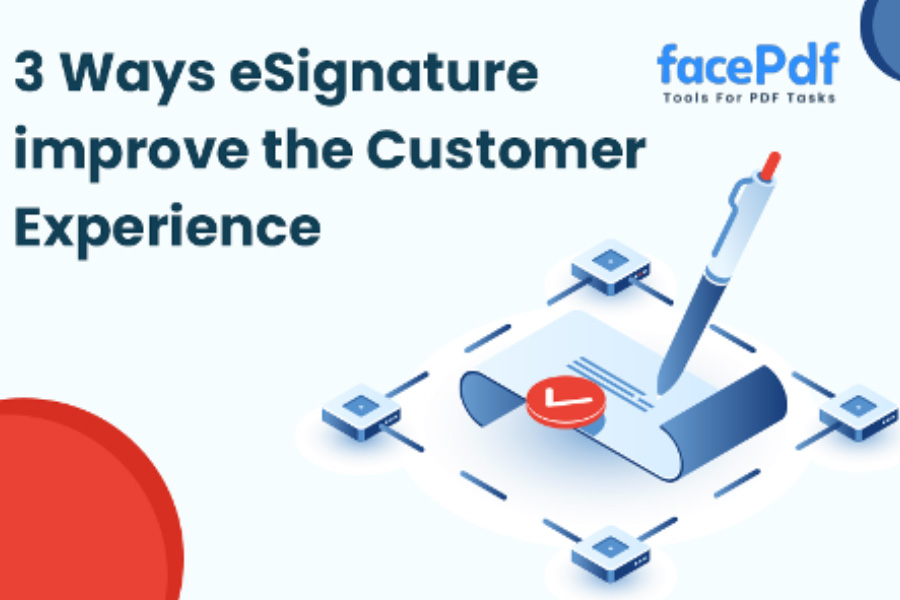Seventy-two percent of Internet users are willing to abandon a brand that provides a disconnected customer experience. For many organizations, document approval and signature workflows are necessary parts of that customer experience, and they often come at a critical time: when a person is ready to transact.
Many businesses are shifting from manual, paper-based processes to e-signature workflows. Think about how often you’ve already been asked to approve an agreement, such as mortgage and credit card applications, doctor visit patient forms, home, and car insurance policies or claims information, acquire and warranty agreements, and government forms.
The pandemic has only accelerated the need for contactless signatures and a shift to electronic processes to maintain business continuity.Indeed, 60{d13d12ce37c72f421914414063ef9fd972be275d1020909a7046326096876d95} of business and technology leaders said e-signatures are a critical requirement in supporting business continuity in a recent Forrester report.
It’s also important to note that document signing workflows not only improve the customer experience but they can pay dividends for businesses. In another study, Forrester found that organizations using signature workflows achieved a 420 percent return on investment and a 28X faster time-to-business.
Let’s look at three ways businesses use online signature workflows to deliver exceptional customer experiences and improve business outcomes.
When do clients utilize electronic signatures?
Loads of industries use digital agreement software in their sales and client onboarding processes. From real estate to financial and governmental institutions, documents need to be signed, and there is no effortless way than with electronic signatures. An excess of paper documents can be a disruption to business operations. Digital agreement platforms streamline creating, sending, and reviewing contracts when onboarding new customers for your product or service.
Delivering an end-to-end connected digital customer onboarding experience
Electronic signature solutions like FacePdf eSignature eliminate the need to manually handle paper documents one by one by enabling the sending of multiple contracts for signature at once via the multi-signature request feature. This way, rather than asking parties to sign, scan, and post paperwork, they can fill out and click some boxes. It accelerates the agreement process in time-sensitive situations and makes customer interactions more efficient.
Today’s consumers expect brands to deliver personalized
The electronic signing of an agreement should be considered an affair in and of itself, just like any other touchpoint across the digital customer journey. It is also a crucial part of the customer onboarding process. This stage represents the beginning of the connection with the client. It marks the moment the business goes from prospect to customer.
TSB Bank, for example, successfully transformed its customer onboarding experience by moving from offline document signing to digital-only, thus creating an end-to-end online journey for its individual and business banking customers. They can now transact online without needing to go into a branch office for document approval or signatures. In just eight weeks, the bank successfully released 18 digital forms and processed over 80,000 interactions online.
The state of Oklahoma is also entirely investing in digital to provide its residents, who are its customers, with exceptional, frictionless experiences. According to the state of Oklahoma Lieutenant Governor Matt Pinnell, the state’s citizens are now heading online due to COVID-19.
Automated electronic signatures supporting contactless document approvals have been enabled in Oklahoma. It paves the way for services like business incorporation and fishing license acquisition.When they need to connect with our agencies, the expectation is much higher now,” said Pinnell.
Increasing efficiency byshifting to digital workflows
Shifting from paper-based manual processes to online workflows can result in reduced costs and greater efficiency for a business.
Take 100-year-old HSBC, a global financial services provider serving 37 million customers, and its remarkable evolution. HSBC recognized the need to shift from legacy paper-based processes to digital, not only for its significant cost savings but also to keep pace with competitors that offered smooth-running online processes. By digitizing its document process, HSBC saw significant efficiencies and performance over paper-based processes.
“We have seen in paper-based journeys in the past, ones that are very valuable to us as an organization, 50{d13d12ce37c72f421914414063ef9fd972be275d1020909a7046326096876d95} return rates on documentation. They are currently operating at an 80-plus percent when they are supplied as an electronic signature,” said Craig Johnson, global head of multichannel and employee tablets at HSBC. “That translates to many zeros on the revenue case that goes with it – not just the cost-benefit case.”
To hasten the signing procedure, use integrations with business software
Enterprise software from companies like Microsoft, Workday, and SAP is widely used by businesses today. With the electronic signing, they can activate signature workflows and send out agreements directly from common apps. They can also automatically prefill papers with CRM data, so they don’t need to be manually filled, which speeds up the signing process to close transactions faster.
For example, Hitachi Solutions Europe integrates signature workflows to activate its agreements directly from Microsoft Dynamics 365, such as consulting agreements, work orders, and legal documents. Doing so has reduced contract turnaround times by 80 percent, from 10 days to two.
Electronic signatures improve the customer experience and business outcomes
The signing of legal documents is often the last step in a customer’s journey, as it signifies the transition from a potential client to a paying client and the conclusion of a deal or contract. Suffice it to say; businesses mustn’t disappoint. By ensuring they deliver a stellar customer experience so close to the finish line, brands can realize the benefit of higher conversion rates and faster times to business.
In 2022, as a business owner, you’re well aware of your clientele’s ever-evolving wants and demands. You saw firsthand how the COVID-19 pandemic drastically altered consumers’ spending habits. You’ve also seen how new digital technologies influence brand customer expectations.
Did you know that electronic signatures are a rapidly growing digital trend that is improving the customer experience and contributing to the success of businesses? If not, take note of this eye-opening stat: The digital signature market is expected to reach USD 35.03 Billion by 2029 (Fortune Business Insights) (Fortune Business Insights).

